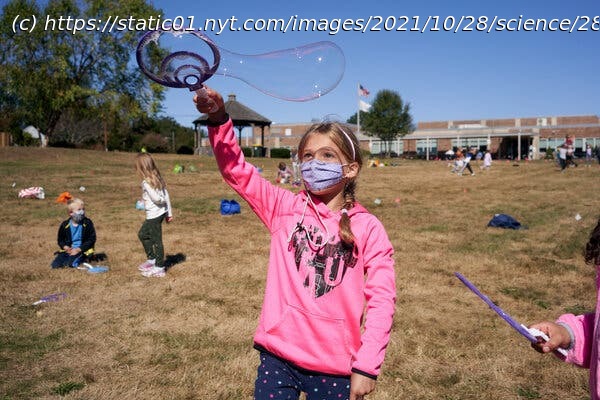Federal scientists estimated that more than 40 percent of children aged 5 to 11 had been infected with the coronavirus by June. Outside experts aren’t so sure.
A startling statistic emerged as advisers to the Food and Drug Administration last week debated use of the Pfizer-BioNTech Covid-19 vaccine in children ages 5 to 11. According to one federal scientist, by June an estimated 42 percent of these children had already been infected with the coronavirus. That figure was much higher than anyone expected. But the estimate, which was from the Centers for Disease Control and Prevention, might have overstated the percentage of children who were infected, several experts said in interviews. Among other flaws, the percentage was based on tests known to have a high rate of “false positives” — signaling the presence of antibodies where there are none. And even if unexpectedly high numbers of children have been infected, parents should not assume that they are shielded from the virus and don’t need the vaccine. Immunization will cement that protection now and against future virus variants, said Scott Hensley, an immunologist at the University of Pennsylvania. “The data are clear that even if they had been exposed in the past that they would benefit from the vaccine,” he said, speaking of children. “The risks of vaccination are very low, whereas the benefits are appreciable.” Most likely, no. The C.D.C. estimate was based on tests of a small number of children who had blood drawn for routine medical care or other illnesses. That is not a representative sample of the general population, said Akiko Iwasaki, an immunologist at Yale University. For example, the sample may have included children who have cancer or other conditions that weaken the immune system. “Usually, kids don’t get blood drawn for any routine medical care unless they have some reason to,” Dr. Iwasaki said. Studies based on blood samples at clinics or by recruiting volunteers notoriously overestimate how many people have been infected, said Deepta Bhattacharya, an immunologist at the University of Arizona. “If you’re not careful about doing a random sample, then the seroprevalence numbers can get pretty wacky,” he said. For example, scientists examining blood donations estimated that about 76 percent of the population in Manaus, Brazil, had been exposed to the virus by October 2020, perhaps achieving herd immunity.






